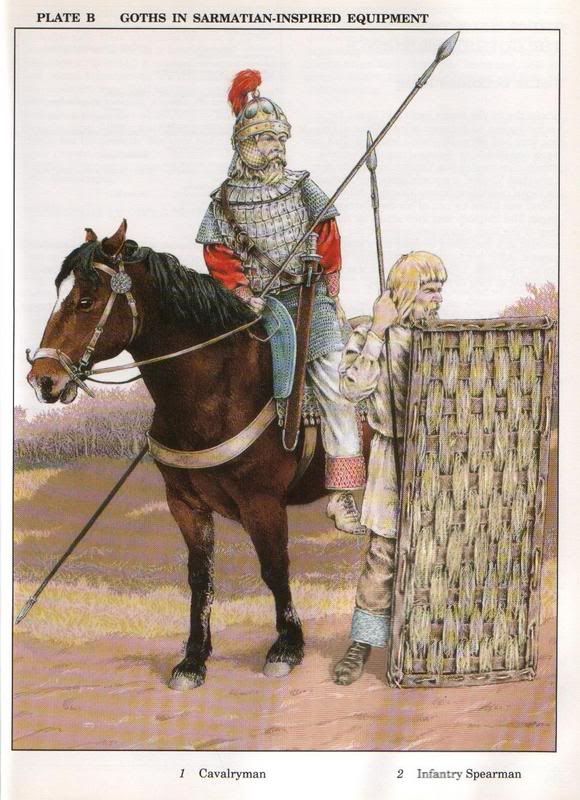PRINCIPAL COMBATANTS: Sarmatians and Byzantine Empire vs. Goths and allied Germanic tribes; subsequently, Sarmatians vs. Byzantine Empire
PRINCIPAL THEATER(S): Dacia (approximately modern Romania)
MAJOR ISSUES AND OBJECTIVES: The Sarmatians secured the aid of the Byzantine Empire in resisting invasion by the Goths and their allies; when the Sarmatians betrayed the Byzantine alliance, the Byzantines withdrew aid and encouraged the Goths’ conquest.
OUTCOME: The Sarmatians were destroyed as a people; some 300,000 were permitted to resettle within the Eastern Roman Empire; the Goths became foederati of the Byzantine Empire.
Goths and other Germanic “barbarian” tribes made frequent incursions into the territory of the Sarmatians, a people living in Dacia (approximately the region of modern Romania). The Sarmatians shared with the Scythians, a closely related people, a heritage of horsemanship and skill at arms. By the fifth century B. C. E., they had also proved themselves superb administrators, coming to control- and to govern well-all the lands between the Ural Mountains and the Don River. By the fourth century B. C. E., they crossed the Don and conquered the Scythians, and during the first century C. E., the Sarmatians became a powerful threat to the Roman Empire.
Although closely allied with several Germanic tribes, the Sarmatians were themselves overwhelmed by the Goths during the third century C. E., and their territory was reduced to Dacia (Romania) and the lower Danube region. Even so contracted, the Sarmatians were continually harassed and menaced by the Goths and therefore reluctantly requested military aid from Constantine I the Great (c. 285-337), emperor of the Eastern Roman Empire (Byzantium). Constantine dispatched an army under the command of his son. Operating in concert with the Sarmatians, the force attacked the Goths and Gothic allies during 332-33. In the midst of this action, however, the Sarmatians turned against their Byzantine allies by making forays against the Roman Empire. Outraged by the betrayal, Constantine threw his support behind the Goths. He urged them to act even more aggressively against the Sarmatians, as he withdrew Roman aid. Without this aid, the Sarmatians were instantly overwhelmed by the Gothic hordes.
In a curious act of magnanimity, Constantine permitted some 300,000 Sarmatian refugees to resettle within the Eastern Roman Empire. As for the Goths, they responded to the Christianizing efforts of the Byzantine bishop Ulfilas, and embraced membership in the Byzantine federation. In exchange for their good behavior, the Goths received Byzantine subsidies.
Further reading: Edward Gibbon, Decline and Fall of the Roman Empire, 7 vols., ed. by J. B. Bury (New York: Modern Library, 1995); Peter Heather, The Goths (London: Blackwell, 1996); John Julius Norwich, Byzantium: The Early Centuries (New York: Alfred A. Knopf, 2003).
